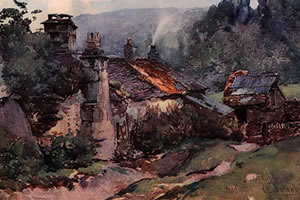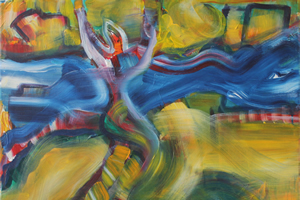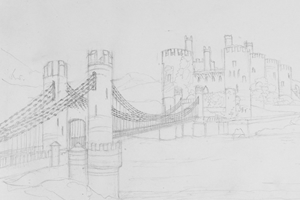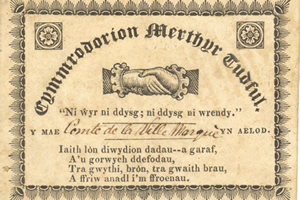Travellers and Locals
Antoine-Philippe d'Orléans, Felix Mendelssohn Bartholdy, Queen Elisabeth of Romania, Valerius de Saedeleer, Béla Bartók. Over the years, a number of famous travellers from the European mainland have visited Wales. Some of them have come to breathe in the healthy sea air, some to meet with Welsh writers or Irish spinsters. Some came to escape their war-torn home countries, while others were simply passing through on their way to Dublin.
While the majority of visitors from the European mainland came purely as explorers of the country, a good number were inspired to undertake the journey in order to meet with notable people in Wales. The Ladies of Llangollen, Eleanor Butler and Sarah Ponsonby, were perhaps among the first 'international' celebrities in Wales. These two noblewomen from Ireland notoriously escaped to north Wales from unwanted marriage and, over the years, received many famous visitors from all over Britain as well as from France. Among their visitors was the novelist Madame de Genlis, living in exile in Britain because of the French Revolution. However, instead of finding tranquil sleep during her visit to Plas Newydd in 1792, Genlis was kept awake at night by an aeolian harp (a kind of wind chime) that had been installed right outside her window.
Throughout the nineteenth century, the quality of the roads and of some inns and guesthouses raised the eyebrows of many visitors from continental Europe. However, it is common for the travel writers to write about the unexpected friendliness of their Welsh hosts and the strangers they met on the road. The Austrian linguist Hugo Schuchardt travelled to north Wales in 1875 to learn the Welsh language. People eagerly shook hands with him every time he was introduced to them as "the German who understands Cymraeg" and, so that he could improve his Welsh, his Caernarfon landlady always approached her guest with auspicious solemnity. Speaking. Very. Slowly.
During World War I, Welsh hospitality reached new heights when Belgian refugees were encouraged to set up their temporary homes in Wales. In particular the Davies sisters of Gregynog Hall invited musicians, painters and sculptors to Wales, not just out of the goodness of their hearts but also in the hope of invigorating the arts in Wales. Even though the Belgian refugees seem to have largely been forgotten prior to the centenary in 2014, they did not return to their home country without leaving traces of their presence all over Wales. Valerius de Saedeleer's paintings of winter landscapes, the woodcarvings by Joseph Rubens on the pews of Llanwenog church in Ceredigion, or the Belgian Promenade walk between Menai Bridge and Church Island are just a few of the lasting examples of Belgium's gratitude to Wales.




